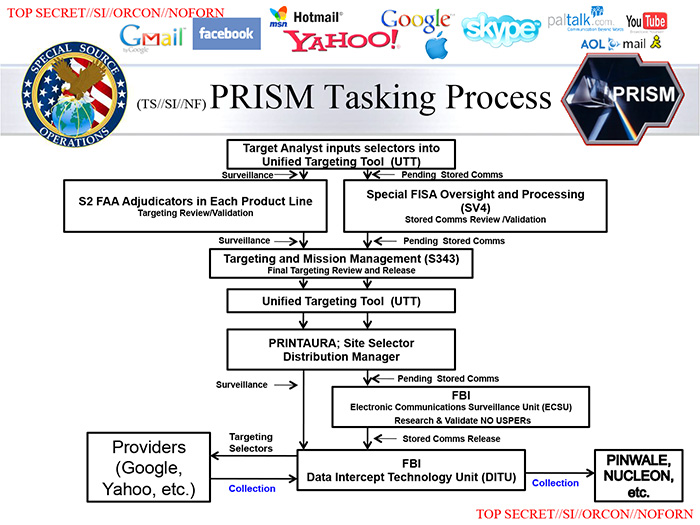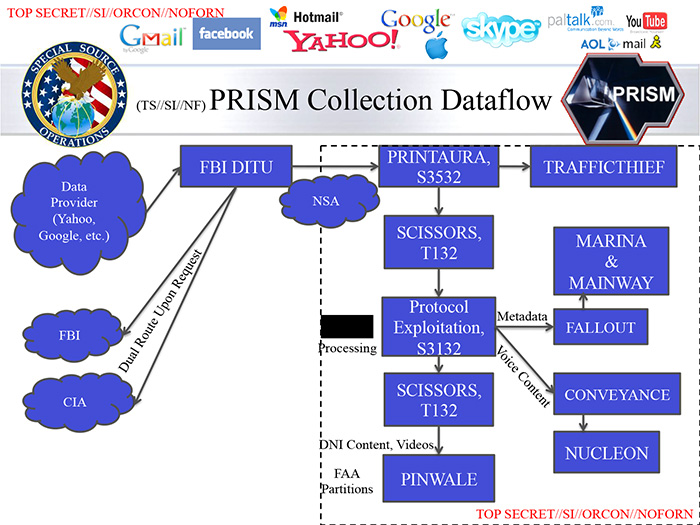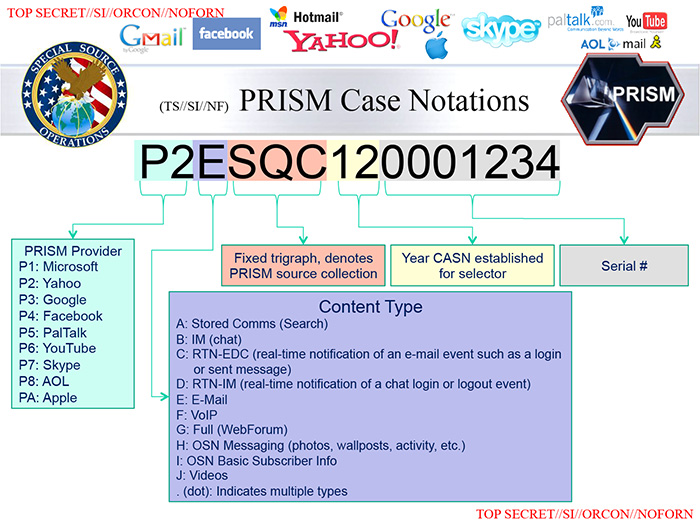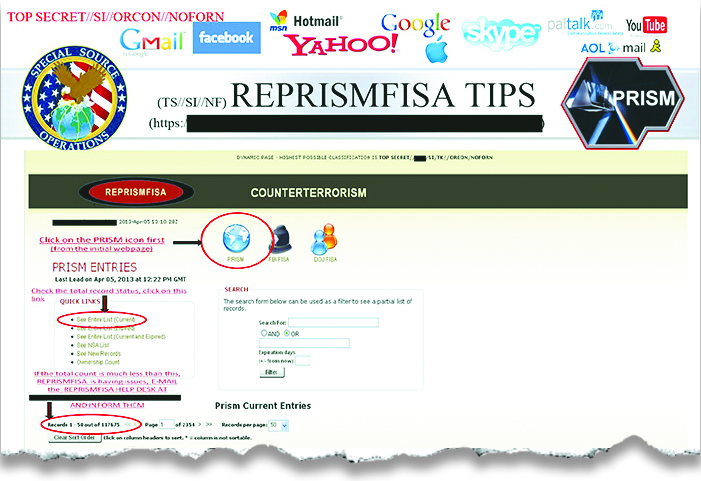
NSA slides explain the PRISM data-collection program
The Washington Post
June 29, 2013
Acquiring data from a new target
This slide describes what happens when an NSA analyst "tasks" the PRISM system for information about a new surveillance target. The request to add a new target is passed automatically to a supervisor who reviews the "selectors," or search terms. The supervisor must endorse the analyst's "reasonable belief," defined as 51 percent confidence, that the specified target is a foreign national who is overseas at the time of collection.

Analyzing information collected from private companies
After communications information is acquired, the data are processed and analyzed by specialized systems that handle voice, text, video and "digital network information" that includes the locations and unique device signatures of targets.

Each target is assigned a case notation
The PRISM case notation format reflects the availability, confirmed by The Post's reporting, of real-time surveillance as well as stored content.

Searching the PRISM database
On April 5, according to this slide, there were 117,675 active surveillance targets in PRISM's counterterrorism database. The slide does not show how many other Internet users, and among them how many Americans, have their communications collected "incidentally" during surveillance of those targets.

Copyright 2013